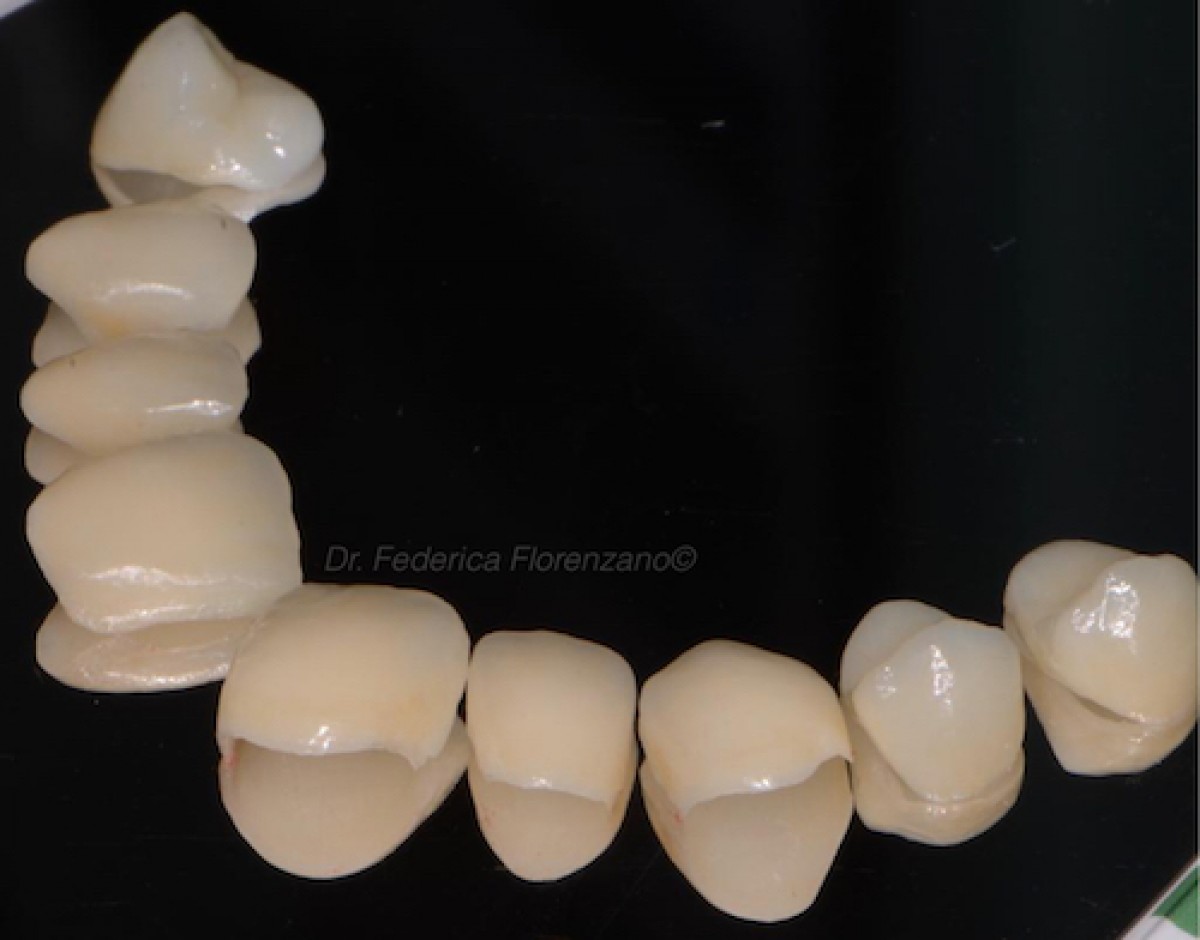
Effect of different fabrication techniques of heat-pressed lithium disilicate veneers on marginal fit
Co-authors: A. Comba, F. Florenzano
Lorenzo Breschi
Ceramic laminate veneers are a predictable and conservative restorative treatment option to solve aesthetic issues in anterior teeth, with high rates of long-term success. Two techniques are available to fabricate heat-pressed lithium disilicate veneers: the staining technique (S) and the cutback technique . Three firings are usually required for the cutback technique: the wash, the incisal, and the glazing and characterization firing, while only one firing is needed for the staining technique: the glazing and characterization firing.
Marginal fit of any dental restoration is essential for its long-term success and ranges from 50 to 300 mm. A gap of 120 mm is usually defined as clinically acceptable by the scientific world, however there is a lack of information regarding the marginal fit of heat-pressed lithium disilicate veneers.
In the present in vitro study, Dr. Panagiotis Gakis and his research group evaluated and compared the marginal fit of heat-pressed lithium disilicate veneers fabricated with the two commonly used techniques, staining and cutback, using 3D analysis.
Materials and methods
Two groups of heat-pressed maxillary left central incisor lithium disilicate veneers were fabricated (n=10) differing only in core thickness and fabrication process. The tooth preparation was standardized at 0.6 mm cervical and middle third, and 0.7 mm incisal third, with 1.5 mm of incisal reduction. Group S (staining) was an anatomic contour veneer with one glaze firing. The cutback group (CB) had a cutback core of 0.6 mm on the cervical and middle third, and 0.5 mm on the incisal areas for ceramic application with three firings (wash, incisal, and glaze firing). The amount of ceramic application was standardized, and all veneers had identical final dimensions. Marginal fit was evaluated at two stages: after pressing the copings (control) and after glaze firing or ceramic addition using the virtual replica technique and 3-dimensional analysis. The wax copings were invested, eliminated, and pressed with IPS e.max lithium disilicate high translucency ingots, and the overall marginal fit and change in marginal fit after firing were measured in the cervical, mesial, distal, and incisal areas. The Shapiro-Wilk test was used to evaluate normality. Repeated-measures ANOVAs were used to explore differences between the 2 groups (S and CB) as per time (before and after firing) for each location (cervical, mesial, distal, and incisal) (a=.05).
Results
The datas obtained by the University of Texas revealed that veneers produced with these two techniques showed no significant differences in all measurement areas. The mean overall marginal opening for the staining and cutback techniques was 63 mm and 62 mm (P=.425), respectively . These results conflict with all the previous studies that analyzed marginal fit using SEM or impression replica technique. Instead, these results are consistent with those of studies for heat-pressed lithium disilicate crowns.
Conclusion
Based on the data obtained, the research group from Texas concluded that:
1. No difference was found in the marginal fit between the cutback and the staining technique after firing;
2. A statistically significant (P .05) change was found in the marginal fit of the interproximal areas of the heat-pressed lithium disilicate veneers fabricated with the cutback technique during ceramic addition.
3. Heat-pressed lithium disilicate veneers fabricated either with the cutback or the staining technique demonstrated marginal fit within the clinically acceptable limits for ceramic restorations.
For more information: Effect of firing and fabrication technique on the marginal fit of heat-pressed lithium disilicate veneers.
 Tag
Tag
 Read more
Read more
Editorials 10 October 2025
With proud smiles and crisp white coats, ninety-three learners from the DDS Class of 2029 and the International Dentist Pathway Class of 2028 marked the start of their dental careers at the UCSF...
Periodontology 10 October 2025
Continuous professional development (CPD) in Periodontology refers to the overall framework of opportunities that facilitate a life-long learning practice, driven by the learner-practitioner and...
TheraBreath, the #1 alcohol-free mouthwash brand in the U.S.*, has introduced a new line of dentist-formulated, clinically tested toothpastes designed to support professional oral care...
News 10 October 2025
New officers and trustees were installed at the Minnesota Dental Association’s Leadership Conference on September 19 in Minneapolis.
News 10 October 2025
Smartee Denti-Technology today announced that Professor Gang Shen, its Chief Scientist and Executive President of TaiKang ByBo Dental, has once again been named to the World’s Top 2% Scientists...










